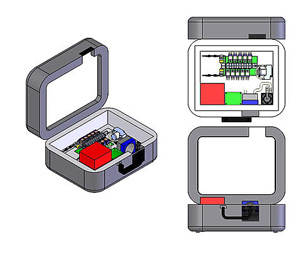Acoustic Weapons: Jürgen Altmann
By Chiu Longina • Feb 29th, 2008 • Category: TEXTO
Original Text (PDF)
Abstract
Acoustic weapons are under research and development in a few countries. Advertised as one type of non-lethal weapons, they are said to immediately incapacitate opponents while avoiding permanent physical damage. Reliable information on specifications or effects is scarce, however. The present report sets out to provide basic information in several areas: effects of large-amplitude sound on humans, potential high-power sources, and propagation of strong sound. Concerning the first area, it turns out that infrasound —prominent in journalistic articles— does not have the alleged drastic effects on humans. At audio frequencies, annoyance, discomfort and pain are the consequence of increasing sound pressure levels. Temporary worsening of hearing may turn into permanent hearing loss depending on level, frequency, duration, etc.; at very high sound levels, even one or a few short exposures can render a person partially or fully deaf. Ear protection, however, can be quite efficient in preventing these effects.
Beyond hearing, some disturbance in balance, and intolerable sensations, mainly in the chest, can occur. Blast waves from explosions with their much higher overpressure at close range can damage other organs, at first the lungs, with up to lethal consequences. For strong sound sources, sirens and whistles are the most likely sources. Powered, e.g., by combustion engines, these can produce tens of kilowatts of acoustic power at low frequencies, and kilowatts at high frequencies. Up to megawatt power is possible using explosions. For directed use the size of the source needs to be on the order of 1 meter, and proportionately-sized power supplies would be required.
Propagating strong sound to some distance is difficult, however. At low frequencies, diffraction provides spherical spreading of energy, preventing a directed beam. At high frequencies, where a beam is possible, non-linear processes deform sound waves to a shocked, sawtooth form, with unusually high propagation losses if the sound pressure is as high as required for marked effects on humans. Achieving sound levels that would produce aural pain, balance problems, or other profound effects seems unachievable at ranges above about 50 m for meter-size sources. Inside buildings, the situation is different, especially if resonances can be exploited. Acoustic weapons would have much less drastic consequences than the recently banned blinding laser weapons. On the other hand, there is a greater potential for indiscriminate effects due to beam spreading. Because in many situations acoustic weapons would not offer radically improved options for military or police, in particular if opponents use ear protection, there may be a chance for preventive limits. Since acoustic weapons could come in many forms for different applications, and because blast weapons are widely used, such limits would have to begraduated and detailed.

Chiu Longina is
Email this author | All posts by Chiu Longina





[…] “Aversive Audible Acoustic Device” , none of these have yet been shown to be effective. A thorough study by Dr Juergen Altmann looks at the available literature on the effects of sound and sums it up as […]